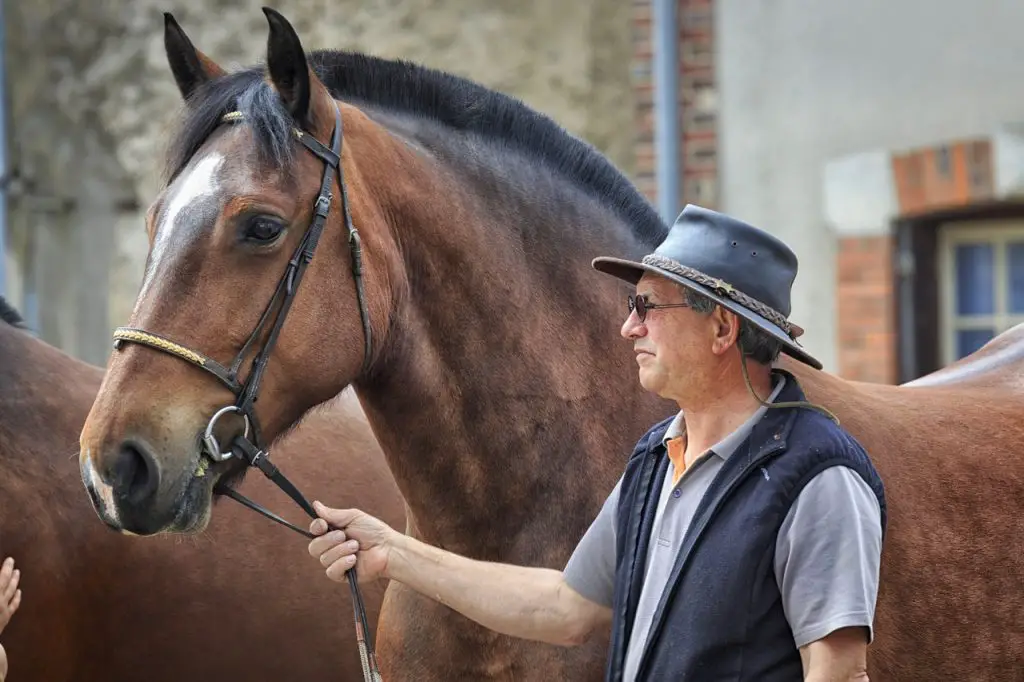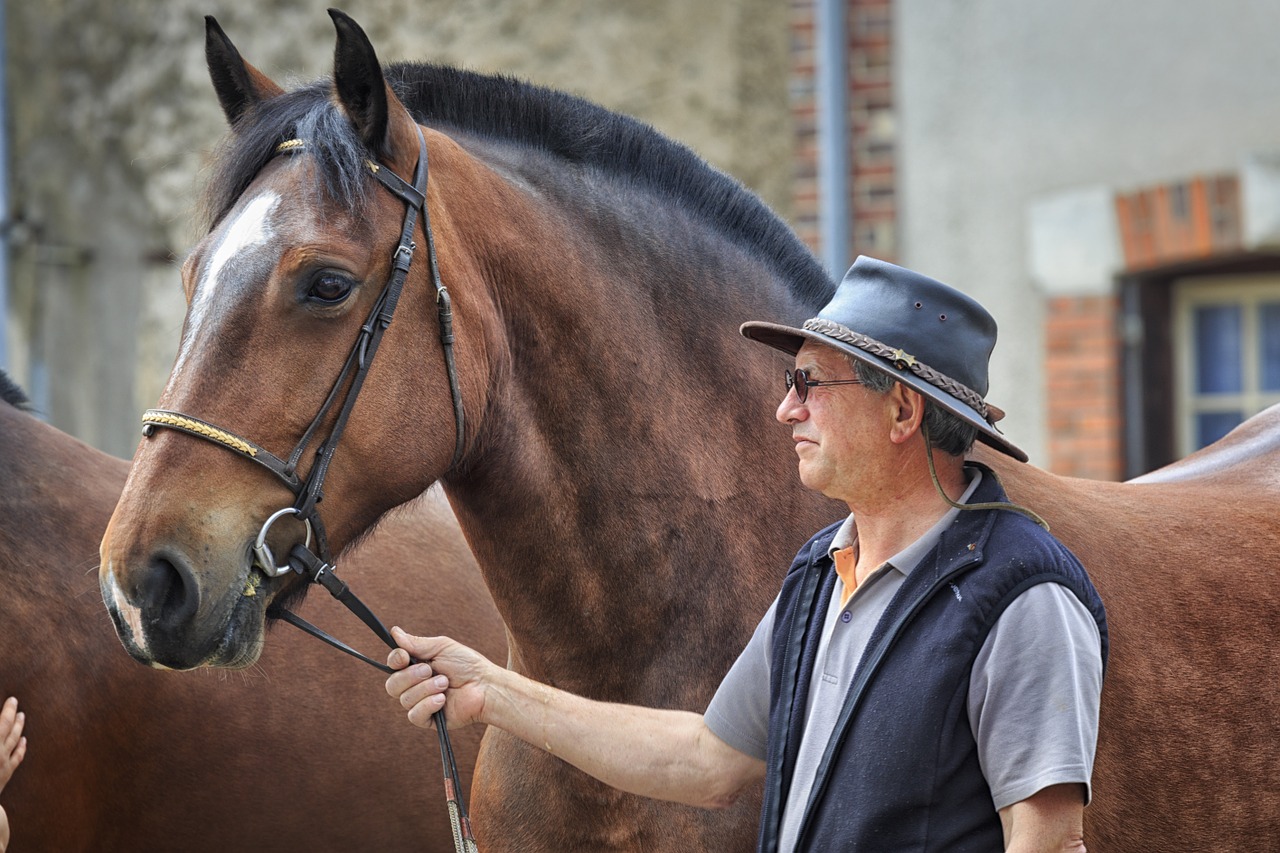Last Updated on February 19, 2022 by Allison Price
Leasing a horse can be a cost-saving option for those who are budget conscious. This arrangement is essentially a formal rental agreement between a horse owner and a rider. It has been thriving in these difficult economic times. Leasing a horse allows an owner to lower the cost of horse care, without having to sell him or take him out of work. It’s a way to get involved in equestrian activities, whether it be a relaxed outing once a week or the chance to compete as an athlete for a season. It is often possible to do so without any financial obligations.
Leasing your horse to owners can help you cover the costs of care and board, and provide peace of mind that your horse will live a long and productive life. It’s an opportunity to share in your passion and not incur full financial responsibility. | ? Stacey Nedrow Wigmore
Leasing a horse is a great way to save money and time. Chelise Storace is the owner of Cressbrook Stables. She is based at Kensington Equestrian Centre in Kensington, New Hampshire. Offering horses for lease was a great way to show her skills as a trainer. She says, “It’s helped me build my reputation for having nice horses.”
Leasing a horse gives the owner assurance that the horse will live a long and productive life under another rider. Chris Phaneuf of Indian Meadow Farm in West Newbury, Massachusetts, felt reassured by this knowledge. She was a hunter/jumper rider and knew that she had reached a point in her career where she could use a more advanced horse to improve her skills. She wasn’t ready for Shady to leave her Thoroughbred hunter. Chris always considered him a friend, not a commodity. She thought hard about what she would do with him, and she finally decided to lease a more experienced horse.

Chris states, “Shady is a big deal to me.” “I’m going to be his owner for the rest of my life.” She explained that leasing him not only helps cover the cost of a more advanced hunter, but also “assures” her that he is being cared for every day. The true benefit is that I am not selling an older horse into a uncertain market or uncertain future.
Affordable Access
A rider may decide to lease a horse because they are looking to save money, but there are other reasons as well. Leasing allows riders to:
- You can pursue your equestrian passions without making a full time commitment. Olana Laffey (jumper/hunter trainer), owner of Evenstride Ltd. in Byfield, Massachusetts, says that adults often lease because they are busy. It’s a great situation for them as they can fit riding into their busy lives. It’s easier to lease.
- Choose a horse that’s proven reliable. Maybe you are returning to riding as Lynn Macfarlane’s teenage daughter, Izzy Werman. Chelise is her trainer. Lynn was looking for a stable horse after a long break. She selected Shady, who is also owned by Chris and rides with Chelise, because she was familiar with him.
- improve skill. Gail Harrington, owner of Black Magic Farm in South Hampton and Derry New Hampshire, says that riding the same horse often can make a rider more skilled than riding several school horses. A leased mount allows a rider to easily change to another horse, without the need to sell the one she has been riding. This is a common consideration for parents like Lynn who are likely to have their child outgrow their beloved pony in a year. Izzy was able to ride with Peanut, take lessons and learn from Chelise. Izzy was ready to go when Peanut was no longer suitable for his?maturing rider.
- To move up to a horse.
- Compete with the right horse at just the right moment. Olana says that junior riders and college students are unable to afford a horse. Leasing gives them the opportunity to show and ride competitively while they have the time. Olana often rents horses to college students and juniors for the summer. Chelise says that a junior rider in her last year can also benefit from leasing a horse to compete. She advises that it is better to rent a top-quality horse than to purchase one, especially if the Junior wants to compete at the highest levels. A short-term lease allows the rider to show her horse until she is ready to go to school. Her parents won’t have to worry about a costly horse to sell.
- It is easy to become a owner. Olana says that leasing is an excellent way for students to try out the responsibility of caring for horses. Gail adds, “Leasing gives a rider education and the feeling of ‘being in the loop’ in a supportive equestrian society.” This is an important element of building the bridge to ownership.
To Make A Match
You can find a partner for your horse, whether you are an owner looking to lease or an owner looking to rent. Talking to friends at the barn, or simply posting a note on a bulletin board might suffice. You can reach a wider audience by placing a classified ad in print or online.
Take stock of both your strengths and your goals before you start your search. Gail considers four main criteria when matching a rider and a horse for lease.
1. Activity? What they’ll do.
2. ability? The skill level of each person and the likelihood that they will progress together.
3. Size?Their stature relative one another. The goal is to be “just right” and neither should be too large or too small.
4. temperament?opposites may ?attract, as the saying goes, but that may not be the best combination for a satisfying horse-rider relationship.
Gail also takes into account a horse’s reliability. She says that safety is the most important aspect of a horse’s life. The more information she has about each person, the more successful the leasing arrangement she makes.
Olana suggests that a rider rent a horse she knows. He should live at her barn, where she trains and rides. Olana states that choosing a well-known entity will increase the chances of a happy match. Olana says that both the horse’s owner and the trainer can keep an eye on the progress of the partnership. Olana says, “You are watching your pony or horse and you know what is going on.” It’s much easier to look at the situation and provide meaningful guidance.
Leasing Options
After a match is made, both the horse’s owner (technically the “lessor”) as well as the rider who will be leasing him (the “lessee”) must agree to the terms of the arrangement. There are two types of leases.
A full lease means that a rider assumes responsibility for the horse and pays a fee. She usually pays some of the horse’s board, either at the barn where he is kept or somewhere else. She is allowed to use her horse as she pleases. The terms of a full lease do not usually specify when or how much a horse can be ridden, nor does it restrict?access to competitions and shows.
A partial lease is where the lessee agrees that he will pay a portion of the horse’s expenses (usually half his board at the barn where the horse resides) in exchange for a set amount of riding time. The balance of the horse’s expenses are paid by the owner, who continues to play a part in his care and use. This arrangement is sometimes called a “half lease” or a “share lease”. It requires constant contact between the owner and rider in order to avoid conflicts.
Nuts Bolts
Although a lease agreement can be written, most riders and owners prefer to have the details in writing. This reduces the chance of confusion and miscommunication later. Others simply create a document that suits their specific circumstances. Some adapt one of the many lease forms that are available online and in reference books. Many owners seek the help of lawyers to create their documents.
Chelise says that Chelise created my current lease agreement. “Originally, I used one I had compiled, but it was never enough to cover everything. Even the one that the lawyer created wasn’t foolproof. As needed, I have added lines to my own lease. My lease requires that anyone leasing a horse for one year must get their spring shots. This is something that a lawyer does not know. I learned this after horses were returned in July without any shots.
The details of a lease agreement can vary depending on the situation. However, most commonly addressed are
- The names, addresses, and telephone numbers for the horse owner (the lessor), and the rider (the lesee);
- A description of the horse (name and age, breed, gender; height; color; distinguishing markings; registration number etc. );
- The term is the start and end dates of the agreement. This could be either month-to-month, for a year or for a series of shows.
- Conditions for early termination
- Fees (deposits, rent, late charges) and due dates
- Specific usage conditions (number of days per semaine, purpose/activity, and guidance from a trainer/instructor etc. );
- Limitations of use
- Instructions for care (stimulating, turnout, food, water, supplements routine veterinary care, emergency aid, etc.) and who will pay the cost.
- Insurance requirements
- The horse cannot be subleased or moved to another place unless it is traveling to a show.
- Special rights (such as the obligation of the lessor to sign a release form for the horse during a show);
- There are two options: the option to renew your lease or the possibility of purchasing the horse.
Lease fees can be negotiable in most cases. A full year lease will cost between 25 and 30 percent of the horse’s total value. That is, $2,500 for a $10,000 horse. Even though it may seem like a large investment, it is a practical way of having access to a valuable horse. This seems to make sense regardless of the economic state.


